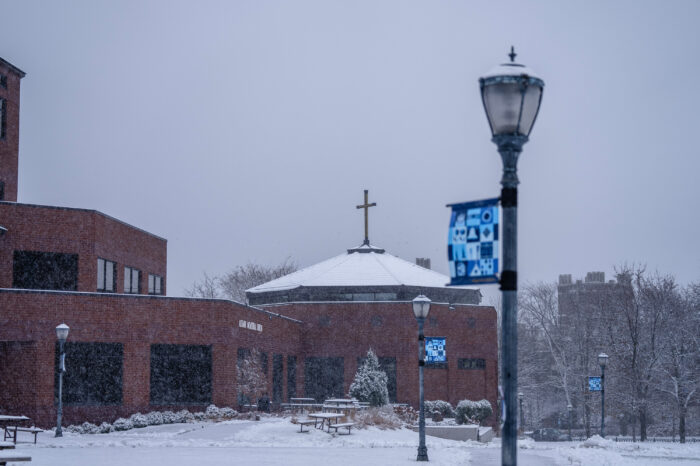The American flag continues to be a steadfast symbol of freedom — and it’s something we celebrate every June 14. Flag Day is an annual commemoration of Old Glory’s creation in 1777, although the layout looked a lot different then. Today, the flag flies high with its 50 stars representing 50 states and 13 red and white stripes, which symbolize the 13 original colonies.
The flag’s development has long fascinated Dr. J. Patrick Mullins, associate professor of history — here he provides five interesting Flag Day facts that just might surprise you.
1. Flag Day originated just 30 miles from the Marquette University campus.

A 19-year-old teacher named Bernard J. Cigrand ran the Stony Hill School in his hometown of Waubeka, Wisconsin, just north of Milwaukee in Ozaukee County. On June 14, 1885, the anniversary of the flag’s creation, he led his pupils in a history lesson called “Flag Birthday.” In 1886, Cigrand began a campaign for a national holiday observing the flag’s birthday. Believing that reverence for the American flag would promote attachment to the American republic, President Woodrow Wilson proclaimed June 14 as Flag Day, starting in 1916. The Wisconsin origin of Flag Day is memorialized at the National Americanism Center in Waubeka and celebrated with an annual Flag Day parade in neighboring Fredonia.
2. The first time red and white stripes were used to represent America, there were nine stripes — and they were vertical!
On exhibit at the Old State House in Boston, this peculiar flag was created and flown at the Liberty Tree by the Sons of Liberty, an organization formed to oppose British taxation in the 1760s. The nine vertical stripes may have symbolized the nine colonies which sent delegates to the Stamp Act Congress in New York in 1765. The Liberty Tree Flag is currently undergoing authentication efforts by historians.

3. Raised during the Revolutionary War, the first American flag featured, strangely enough, the Union Jack of Great Britain.

The Continental Colors consisted of 13 horizontal stripes of red and white, to which was added a canton (the square in the upper left corner) depicting the British flag. During the Siege of Boston, Gen. George Washington raised this flag on Jan. 1, 1776. Its design is a reminder that the Revolution’s original goal was not independence from Britain but the restoration of the colonists’ liberties under British law. On June 14, 1777, almost a year after the Declaration of Independence, Congress replaced the British flag with 13 white stars on a blue field, representing the United States as “a new constellation” in the heavens, alongside older nations and empires.
4. The flag immortalized by “The Star-Spangled Banner” had 15 stripes — not 13!

In 1791, Vermont was admitted to the union and Kentucky joined in 1792. Congress passed the second Flag Act on Jan. 13, 1794, authorizing a new national flag with 15 stars and stripes. During the War of 1812, Mary Pickersgill, her daughter, two nieces and an indentured African American girl made a giant flag for Baltimore’s Fort McHenry. On Sept. 14, 1814, after withstanding heavy bombardment by British warships, the fort raised the giant flag. This triumph inspired Francis Scott Key to write a poem, which became our National Anthem.
5. The rules for the design of the national flag were finalized after the War of 1812.
The design needed to be updated again with the addition of five new states. On April 4, 1818, Congress passed the third Flag Act. Instead of increasing the number of stripes from 15 to 20, the act reduced the number of stripes permanently to 13, honoring the original states. Congress provided, however, that new stars would be added as new states joined the union. With Hawaii’s admission in 1959, the U.S. flag was modified one last time on July 4, 1960.



